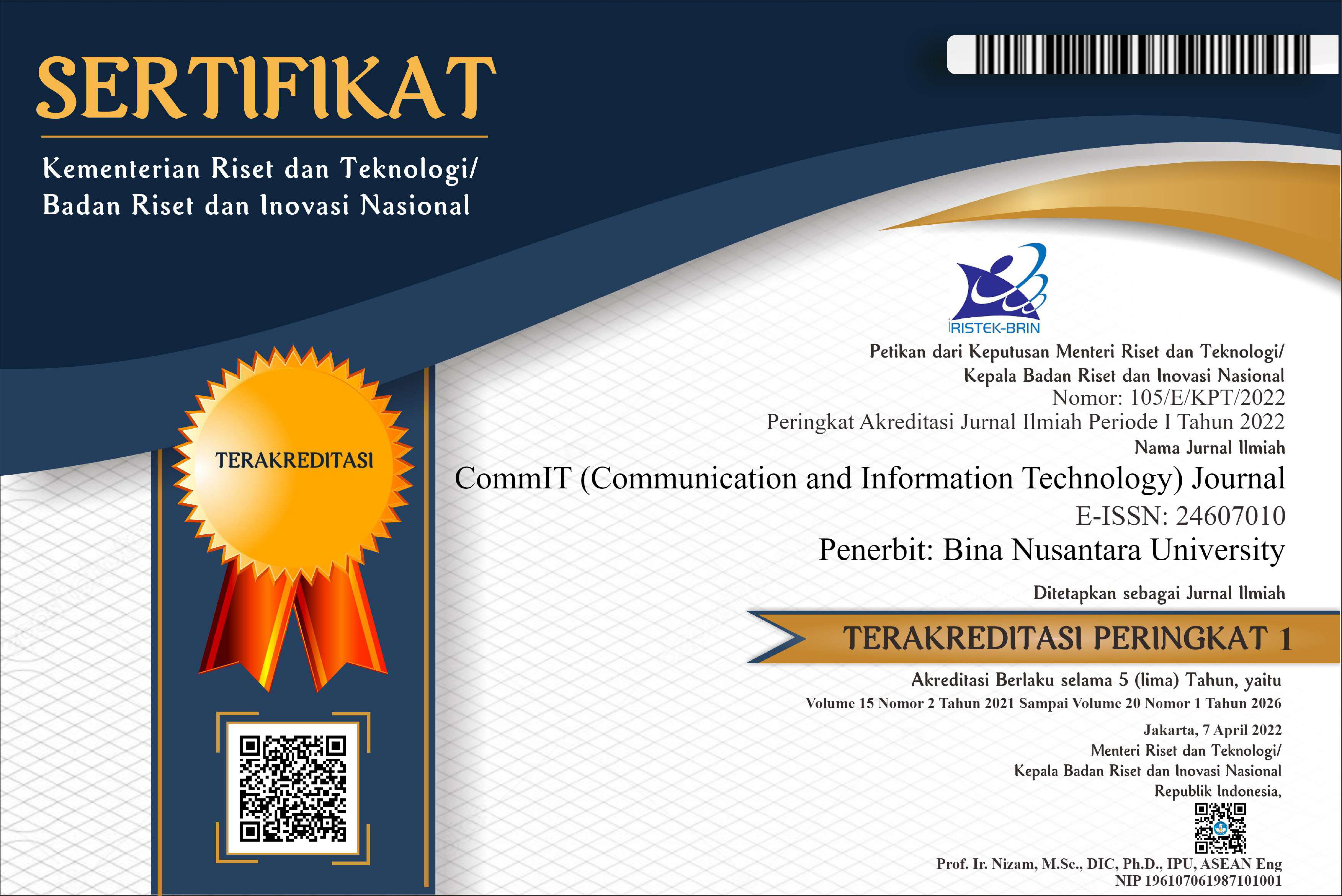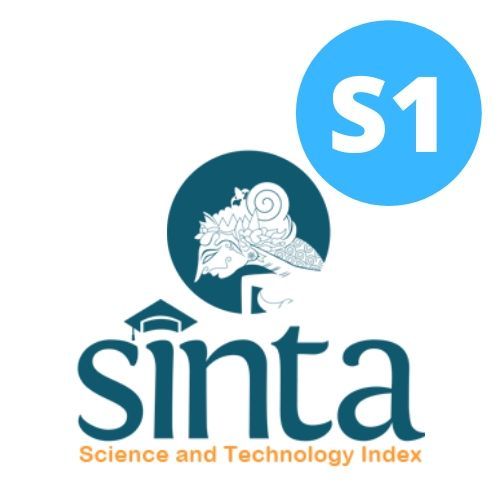Development of Model for Providing Feasible Scholarship
DOI:
https://doi.org/10.21512/commit.v10i1.1666Keywords:
Scholarship, Data Mining, Naive Bayes, Knowledge Discovery in DatabasesAbstract
The current work focuses on the development of a model to determine a feasible scholarship recipient on the basis of the naiv¨e Bayes’ method using very simple and limited attributes. Those attributes are the applicants academic year, represented by their semester, academic performance, represented by their GPa, socioeconomic ability, which represented the economic capability to attend a higher education institution, and their level of social involvement. To establish and evaluate the model performance, empirical data are collected, and the data of 100 students are divided into 80 student data for the model training and the remaining of 20 student data are for the model testing. The results suggest that the model is capable to provide recommendations for the potential scholarship recipient at the level of accuracy of 95%.
Plum Analytics
References
Y. Cao and Y. Li, “An intelligent fuzzy-based recommendation system for consumer electronic products,” Expert Systems with Applications, vol. 33, no. 1, pp. 230–240, 2007.
M.-H. Park, J.-H. Hong, and S.-B. Cho, “Location-based recommendation system using bayesian users preference model in mobile devices,” in Ubiquitous Intelligence and Computing. Springer, 2007, pp. 1130–1139.
F. E. Walter, S. Battiston, and F. Schweitzer, “A model of a trust-based recommendation system on a social network,” Autonomous Agents and 38 Cite this article as: H. Dhika, “Development of Model for Providing Feasible Scholarship”, CommIT (Communication & Information Technology) Journal 10(1), 35–39, 2016. Fig. 3. The Distribution of the Data Used in the Analysis. Multi-Agent Systems, vol. 16, no. 1, pp. 57–74, 2008.
S. Debnath, N. Ganguly, and P. Mitra, “Feature weighting in content based recommendation system using social network analysis,” in Proceedings of the 17th international conference on World Wide Web. ACM, 2008, pp. 1041–1042.
J. Davidson, B. Liebald, J. Liu, P. Nandy, T. Van Vleet, U. Gargi, S. Gupta, Y. He, M. Lambert, B. Livingston et al., “The youtube video
recommendation system,” in Proceedings of the
fourth ACM conference on Recommender systems.
ACM, 2010, pp. 293–296.
F. Sulianta and D. Juju, Business forecasting data mining companies. PT Elex Media Komputindo, 2010.
O. Maimon and L. Rokach, Data mining and knowledge discovery handbook. Springer, 2005, vol. 2.
S. Darudiato, S. W. Santoso, and S. Wiguna, “Business intelligence: konsep dan metode,” Communication and Information Technology Journal, vol. 4, no. 1, pp. 63–67, 2010. [Online]. Available: http://journal.binus.ac.id/index.php/commit/article/view/537/515
A. M. Sundjaja, “Implementation of business
intelligence on banking, retail, and educational
industry,” Communication and Information Technology
Journal, vol. 7, no. 2, pp. 65–70, 2013.
X. Wu and V. Kumar, The top ten algorithms in data mining. CRC Press, 2009.
J. Han and M. Kamber, Data mining concepts and techniques. San Fransisco: Morgan Kauffman, 2006.
M. Bramer, Principles of data mining. Springer, 2007, vol. 131.
M. Hall, E. Frank, G. Holmes, B. Pfahringer, P. Reutemann, and I. H. Witten, The WEKA Data Mining Software: An Update, 2009, vol. 11.
F. Gorunescu, Data mining: concepts, models and techniques. Springer Science & Business Media, 2011, vol. 12. 39
Downloads
Published
Issue
Section
License
Authors who publish with this journal agree to the following terms:
a. Authors retain copyright and grant the journal right of first publication with the work simultaneously licensed under a Creative Commons Attribution License - Share Alike that allows others to share the work with an acknowledgment of the work's authorship and initial publication in this journal.
b. Authors are able to enter into separate, additional contractual arrangements for the non-exclusive distribution of the journal's published version of the work (e.g., post it to an institutional repository or publish it in a book), with an acknowledgment of its initial publication in this journal.
c. Authors are permitted and encouraged to post their work online (e.g., in institutional repositories or on their website) prior to and during the submission process, as it can lead to productive exchanges, as well as earlier and greater citation of published work.
USER RIGHTS
All articles published Open Access will be immediately and permanently free for everyone to read and download. We are continuously working with our author communities to select the best choice of license options, currently being defined for this journal as follows: Creative Commons Attribution-Share Alike (CC BY-SA)




















